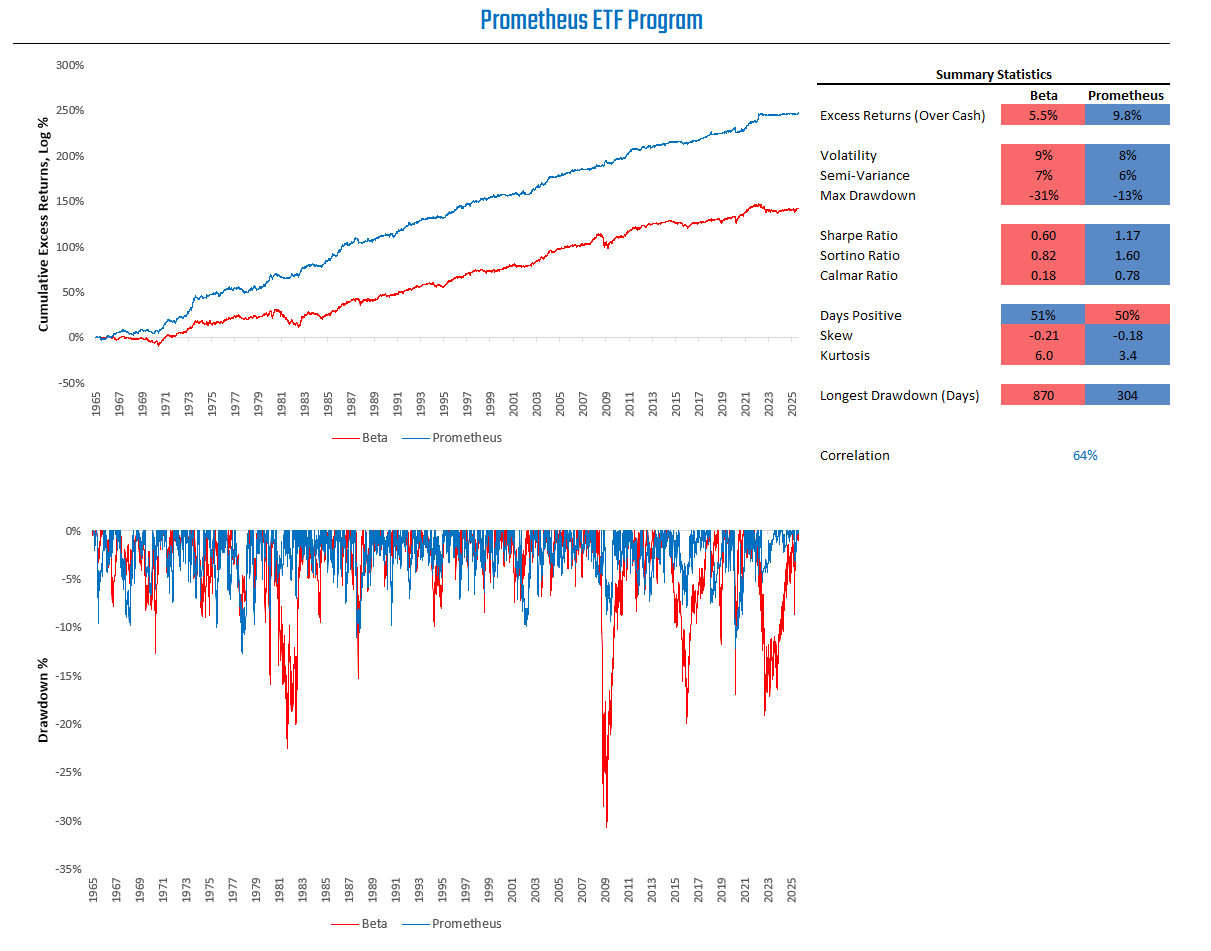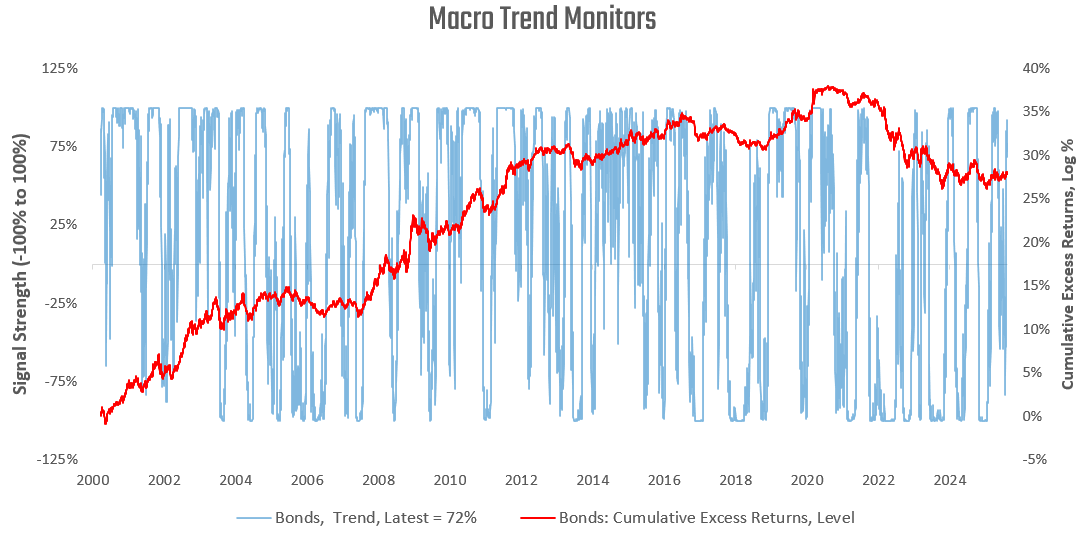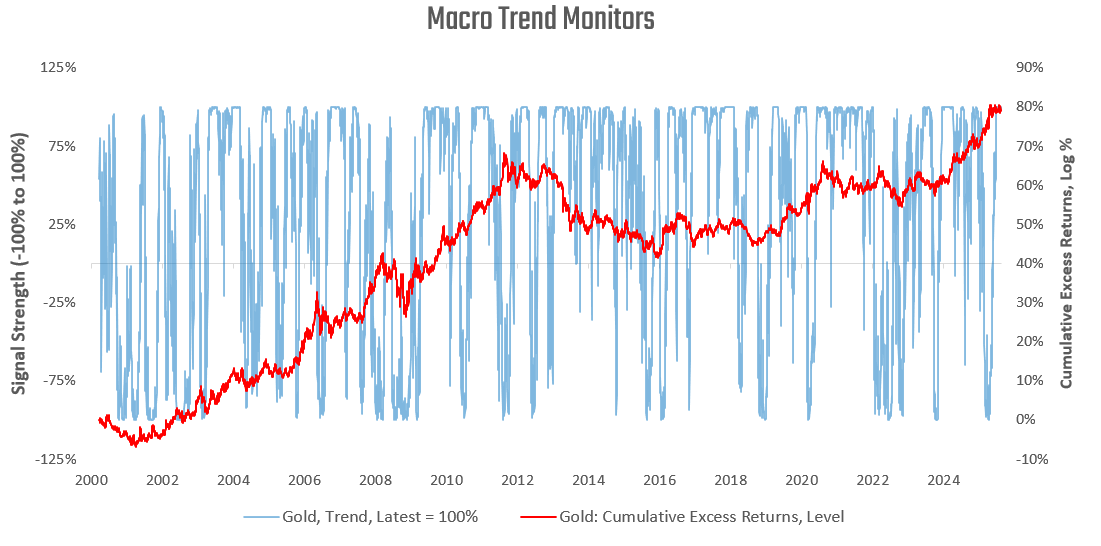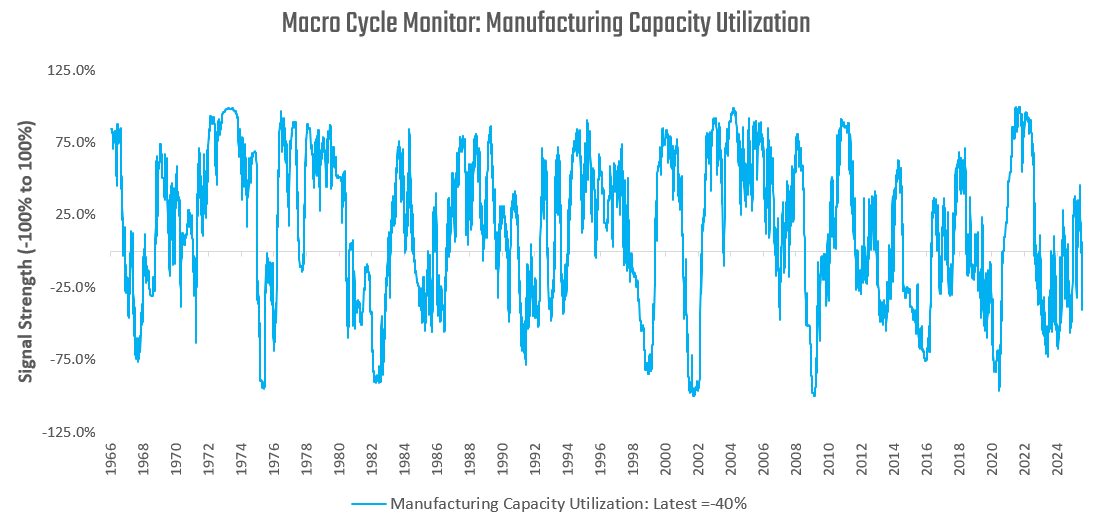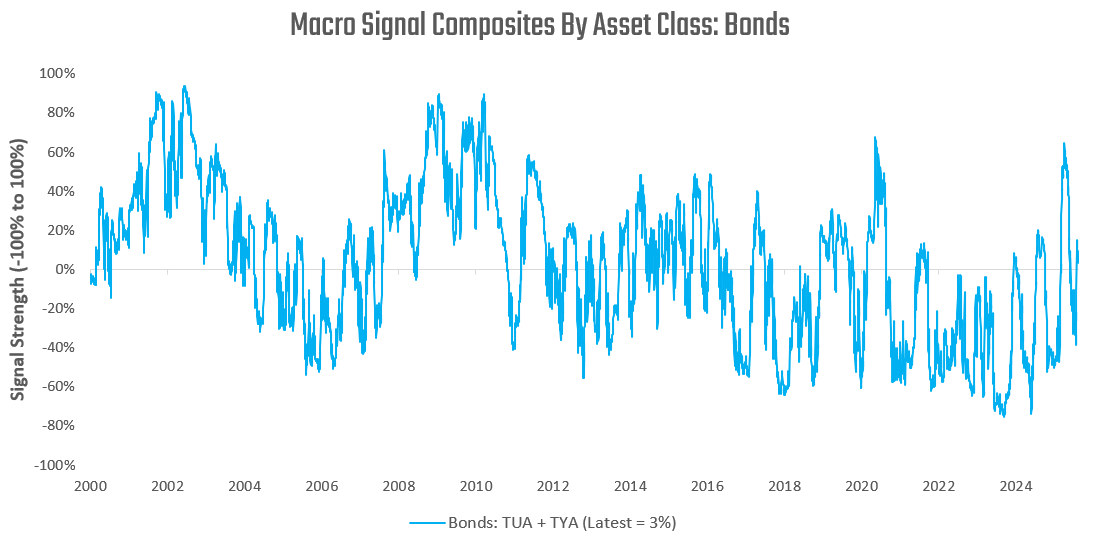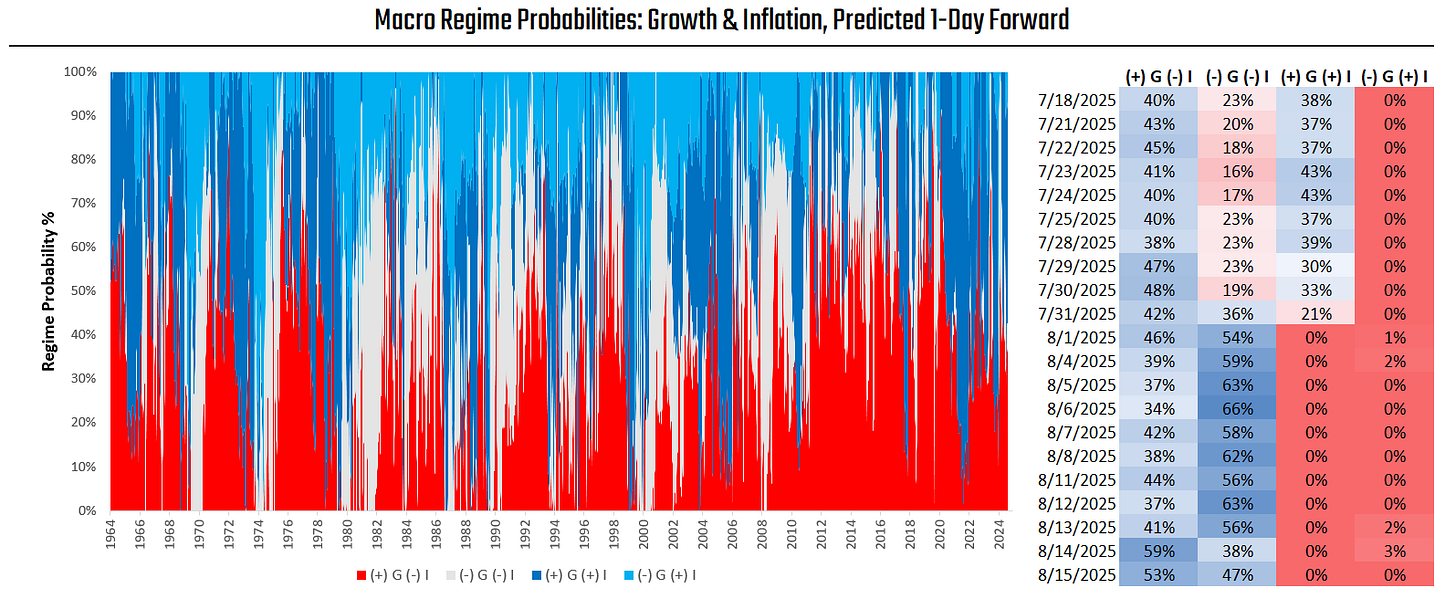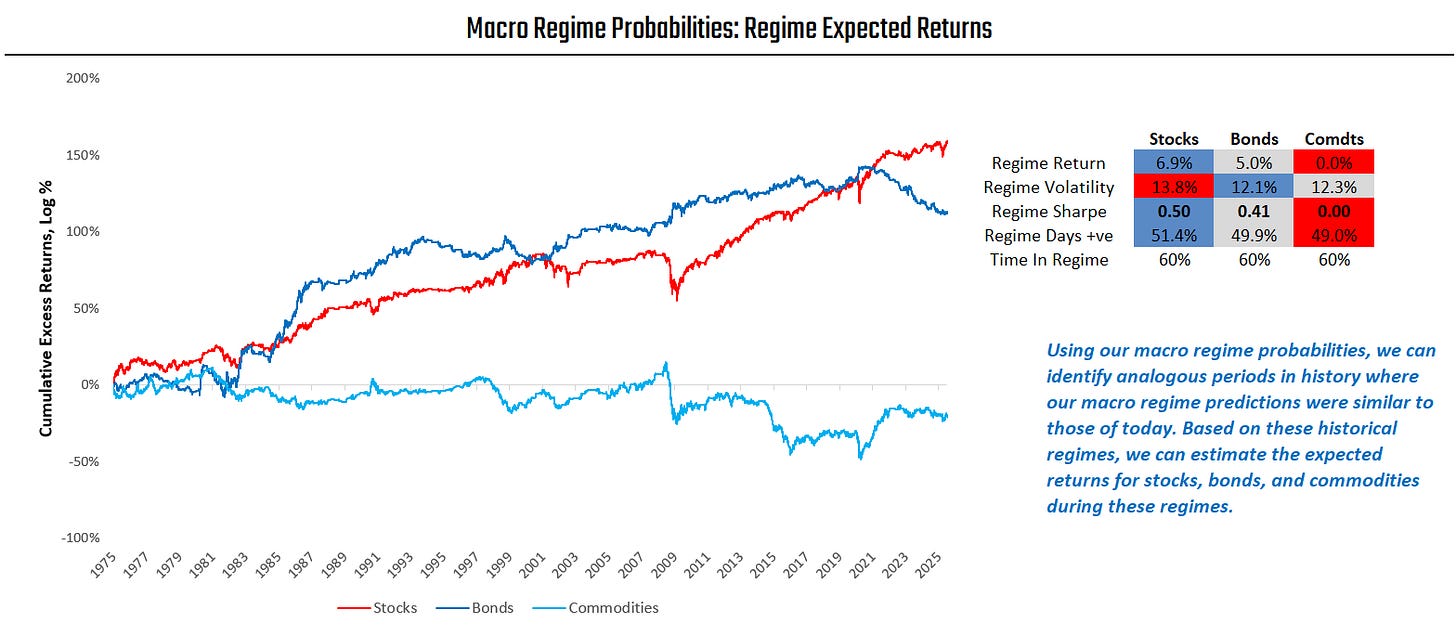Welcome to the Prometheus ETF Portfolio. The Prometheus ETF Portfolio aims to allow everyday investors to access an investment solution that combines active macro alpha and strict risk control, all in an easy-to-follow solution. We aim to achieve strong risk-adjusted returns relative to cash, with limited capital drawdowns in depth and duration. We do this in a highly accessible package, which rotates between three highly liquid ETFs, readily available to any investor with a brokerage account.
This week, we introduce some new tools and processes to the Prometheus ETF Program. We visualize the simulated return path for the program below:
Our observations are as follows:
Macro assets are experiencing strong upward trends, suggesting stable financial conditions and moderate macro volatility.
The business cycle remains in an expansion, there is significant pressure on the Fed to ease monetary policy, and capacity utilization remains muted.
Our forward-looking macro regime probabilities continue to show a dominance of disinflationary outcomes.
Equities continue to look attractive relative to bonds and commodities.
Let's begin sharing the data that drives our current assessment of the macro regime and our subsequent risk management and positions.
Macro Trend Monitors
Asset prices in aggregate reflect changes in conditions relative to expectations. As such, carefully monitoring macro market trends is an integral part of evaluating conditions in the macroeconomy. To do this, we use our macro trend monitors, which we share here. We begin with stocks:
Equities continue to show extremely strong trend signals. Next, we turn to bond market trends:
Bond markets are now trending upwards.
We now move on to broad commodity aggregates:
Commodity markets are now in a moderating uptrend. Finally, we examine our macro trend signals for gold:
Our trend signals continue to show robust trends in gold. Assets in aggregate are experiencing strong upward trends, suggesting stable financial conditions and moderate macro volatility.
Macro Cycle Monitor
Our systems aggregate a wide variety of fundamental economic data to create timely proprietary estimates for the current stages of the macro cycle. We share some of these gauges, starting with our signals for business cycle conditions:
Our latest readings continue to show consistent signs of an expanding business cycle. Next, we turn to monetary policy pressures. Our monetary policy gauges measure the pressures on the Federal Reserve to move monetary policy based on the trade-off between growth and inflation data. The higher our readings, the more pressure there is to hike policy rates. The lower the gauge, the more pressure there is to cut policy rates.
Monetary policy pressures remain consistent with an easing of monetary policy.
Next, we turn to measures of economic tightness. Our gauges of manufacturing tightness tell us whether the economy is running up against capacity constraints when its readings are high, or when there is a significant amount of economic slack when readings are low:
Our latest readings show that manufacturing capacity remains neutral.
Macro Signal Composites
Using the macro cycle gauges, adding asset-specific factors, and leveraging carry, trend, and reversion, we can create asset-class-specific composite signals. We share these signals below and their latest readings. These signals are proportional to our conviction for a given asset and are directly tradeable. We begin with our stock signals for SPY:
Equities continue to present a modestly positive signal strength, supporting long positions. Next, we turn to our bond signals for an equal-weighted blend of TUA and TYA:
Our bond signals have now moved into positive territory, though they remain low.
Finally, we share our signals for commodities in the form of DBC:
Our commodity signal continues to indicate modest pressures on commodity prices to move lower.
Macro Regime Monitor
Our Macro Regime Monitors combine our macro composite signals in the cross-section to estimate tomorrow’s cross-asset, macro market environment.
Our Macro Regime Monitors show that the distribution of regime probabilities is dominated by falling inflation. We visualize the expected return profiles that one can expect during this distribution of predicted regimes below:
The distribution of expected returns favours equities and weighs on commodities.
Portfolio Construction
Aggregating our previously described measures, our systems are looking to position the Prometheus ETF Portfolio as follows:


